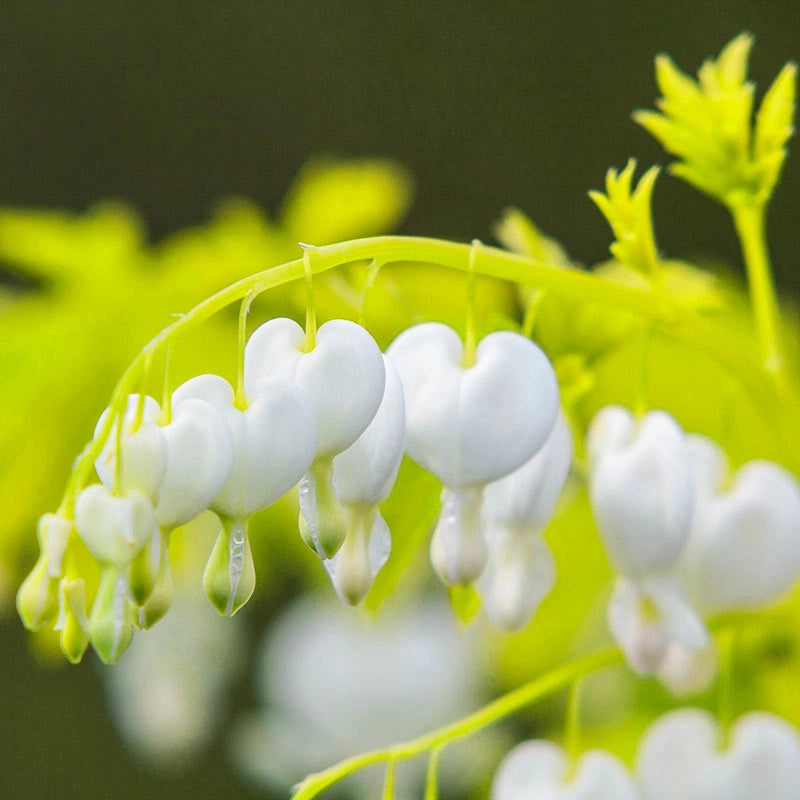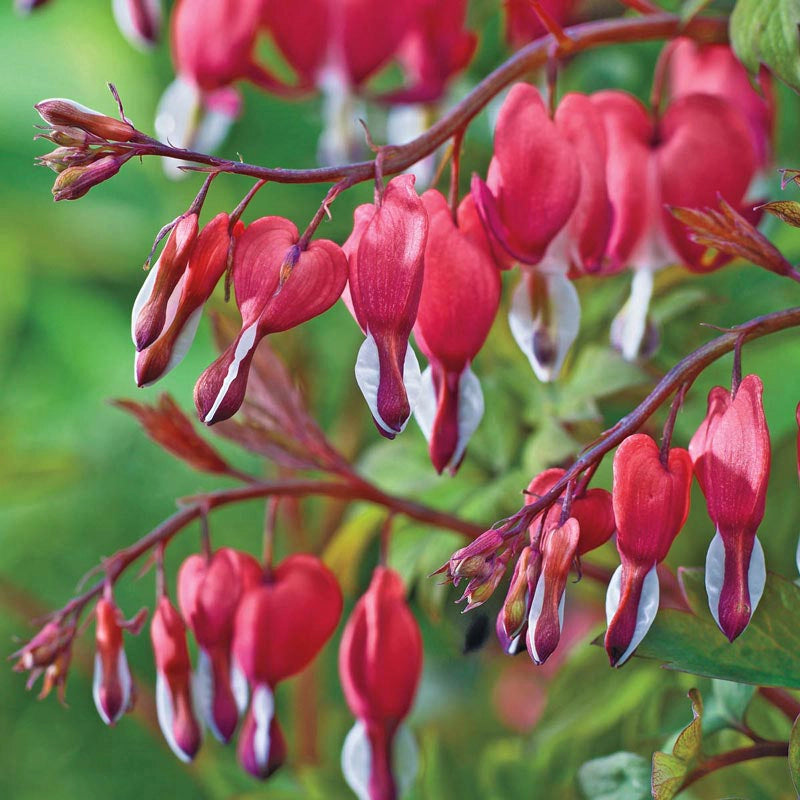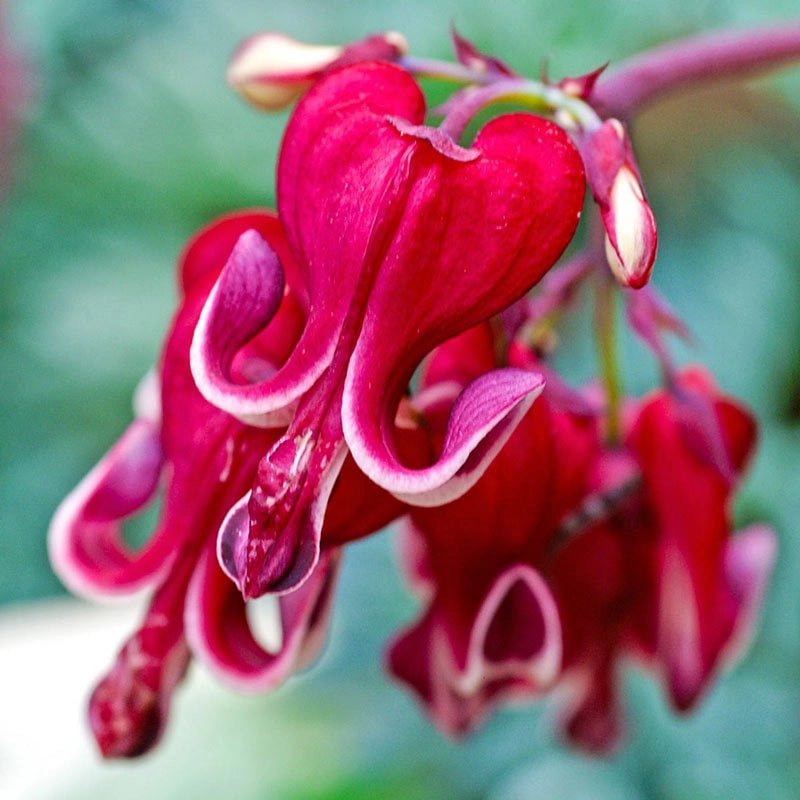3 products
-
White Gold Bleeding Heart (Dicentra)
 White Gold Bleeding Heart (Dicentra)
White Gold Bleeding Heart (Dicentra)- Regular price
-
1 for
$11.99 - Regular price
-
$14.99 - Sale price
-
1 for
$11.99
-
Valentine Bleeding Heart (Dicentra Spectabilis)
 Valentine Bleeding Heart (Dicentra Spectabilis)
Valentine Bleeding Heart (Dicentra Spectabilis)- Regular price
-
1 for
$15.99 - Regular price
-
$19.99 - Sale price
-
1 for
$15.99
Bleeding Heart Bulbs: Frequently Asked Questions
How do you plant Dicentra?
Dicentra, or Bleeding Hearts, are propagated through dividing clumps, so you'll receive your plants shipped as bare roots. Planting is simple—just choose a location with adequate drainage and a good amount of shade throughout the day. Dicentra do best in areas with little direct sunlight, or dappled sunlight only. Dig holes large enough to spread out the roots of your Dicentra and place the plants with the crown at soil level. Backfill soil into the hole and water well. Dicentra will bloom the same season you plant them.
Should I cut back my Bleeding Heart plant/Dicentra?
You can cut back your Dicentra plant after the foliage begins to naturally die back. Some varieties hold their foliage through the summer, and some Dicentras even rebloom. However, most species of Dicentra will lose their foliage in mid- to late summer, before the frost. Don't cut back too early, or the plant won't have the opportunity to store the energy it needs to sprout again in the spring. Use pruning shears to cut the plant to a few inches above the ground
How long does a Bleeding Heart plant last?
Bleeding Heart plants will stay lively for years if properly cared for, and many varieties have a long blooming time. Most Bleeding Hearts are late spring bloomers, opening in April or May and blooming through June. Some varieties do have reblooming tendencies, and will bloom again throughout the summer. Even when your Bleeding Hearts aren't in bloom, you're sure to love their graceful, arching stems and delicate foliage. These plants really add a lot of texture and interest to shade gardens, both in and out of bloom.
Will frost hurt a Bleeding Heart plant?
Late freezes or springtime snow that falls after Dicentra has sprouted can damage the stems and leaves of the plant. Use covers or hoop houses to protect your springtime Dicentra from adverse weather. If your Dicentra does suffer frost damage, cut the damaged areas off of the plant. If this happens early in the season, your Bleeding Heart plant may still bloom.
Can Dicentra grow indoors?
Dicentra can be grown indoors. Remember that these plants do best in shaded areas, so don't place your Dicentra in a sunny windowsill or anywhere that receives direct light. Bleeding Hearts grow best rich, loamy soil, so be sure to fill your pot with well-draining soil and fertilize regularly. Keeping the soil consistently moist is also key.
How big do Bleeding Heart plants get?
Bleeding heart plants vary by species, but most are relatively compact. Bleeding Hearts typically grow between one and three feet in height, with a spread wider than the plant is tall. These perennials are true low-lyers, and perfect for ground cover.
When should you plant Bleeding Hearts?
Bleeding Hearts should be planted in the spring, after all threat of frost has passed. The plant should grow both roots and shoots as it settles into its new location.
When should you transplant a Bleeding Heart plant?
The right time to transplant Bleeding Hearts is in the spring, just as the plants begin to sprout shoots. Dig up the root clump, and divide your Bleeding Hearts using a clean knife or spade. Then, replant in the new location. Be sure to do your transplanting early, before ground temperatures are too warm, this will give your Dicentra plants time to establish before they really get growing.




